A Fine and Large Rare Pair of Lead Figures of ‘Scaramouche’ and ‘Pantalone’ Attributed to John Cheere (1709 - 1787)
A Fine and Large Rare Pair of Lead Figures of ‘Scaramouche’ and ‘Pantalone’
Attributed to John Cheere (1709 - 1787)
Lead
England
18th Century / Circa 1755
SIZE: 97cm high - 38¼ ins high and 99cm high - 39 ins high
Attributed to John Cheere (1709 - 1787)
Lead
England
18th Century / Circa 1755
SIZE: 97cm high - 38¼ ins high and 99cm high - 39 ins high
A Fine and Large Rare Pair of Lead Figures of ‘Scaramouche’ and ‘Pantalone’
Attributed to John Cheere (1709 - 1787)
Lead
England
18th Century / Circa 1755
SIZE: 97cm high - 38¼ ins high and 99cm high - 39 ins high
Attributed to John Cheere (1709 - 1787)
Lead
England
18th Century / Circa 1755
SIZE: 97cm high - 38¼ ins high and 99cm high - 39 ins high
These energetic figures of ‘Scaramouche’ and ‘Pantalone’ from the Commedia dell’Arte can be firmly attributed to John Cheere. He was the leading lead caster in 18th century England. Further statues by Cheere can be found in the gardens of many of England’s greatest country houses; including Castle Howard, Hampton Court Palace, Syon House, Chiswick House and Keddleston Hall. His statues were a feature of many fashionable 18th century gardens until the arrival of Capability Brown and his Arcadian landscapes.
Cheere’s reputation as a master of his art is confirmed by a probable reference to his work by the satirist Richard Cumberland in his visit to Sir Theodore and Lady Thimble. Describing the approach to Sir Theodore’s estate he remarks ‘upon having caught the glimpse of a well-dressed gentleman, standing in a very becoming attitude, who, I concluded, must be the master of the mansion, waiting our approach; and as I perceived, he had his hat under his arm, expecting us with great politeness and civility, I instantly took mine from my head … but, how was I surprised to find, in place of Sir Theodore, a leaden statue on a pair of ‘scates’, painted in a blue and gold coat, with a red waistcoat, whose person, upon closer examination, I recollected to have been acquainted with some years ago, amongst the elegant group, which a certain celebrated artist exhibits to the amusement of stage-coaches and country wagons, upon their entrance into town at Hyde-Park Corner’. The reference is, of course, somewhat ‘tongue-in-cheek’ and is from a fictional account. However, it gives us a great sense of the high esteem in which Cheere was held during his lifetime. As we know, the sculptor produced numerous lead and plaster sculptures for many of the greatest country houses in Britain. He produced two large lead figures of the Borghese Gladiator and the Dancing Faun for Castle Howard, numerous ‘leads’ for the gardens at Stourhead, and statues for Burton Agnes Hall, Hampton Court Palace, Syon Park and Blenheim Palace also. The commissions give us a sense of the scale of Cheere’s reputation, and widespread taste for his sculptures.
In the late 1750’s, he received his most important commission of garden statuary, ninety lead statues and groups for the Royal Palace at Queluz in Portugal for King Pedro III. The commission, which reflects the close diplomatic ties between Britain and Portugal throughout the 18th century, was probably instigated by Dean Joseph Wilcocks, who had been Chaplain of the British Factory in Lisbon. No other British sculptor could have completed such an order, which was dispatched in three shipments between 1755 and 1757. Whilst the ‘leads’ represent the high point of Cheere’s oeuvre, he was also a prolific caster of plaster busts and statues.
Thus by the 1750’s Cheere’s reputation as a maker of garden statuary ‘par excellence’ had reached its height, as is clear from the Portuguese Royal commission towards the end of the decade, which adds an international dimension to his oeuvre.
The present figures are rare and evidence the variety of Cheere’s repertoire, which ranged from classical figures, ‘after the antique’ to ‘Punch and Judy’ characters. It is known that he produced statues of such characters, as has been outlined by J.T. Smith in ‘Streets of London’, a contemporary account written in the mid 18th century gives the following description of John Cheere’s yard: ‘The figures were cast in lead as large as life and frequently painted with an intention to resemble nature. They consisted of ‘Punch, Harlequin, Columbine’ and other ‘pantomimical characters’. ‘Pantalone’ and ‘Scaramouche’ are, of course, figures from the Commedia dell’Arte, but they would have been well known to English customers at the time since they often appeared in ‘Punch and Judy’ shows. ‘Pantalone’ was the greedy Venetian merchant with a cat on his shoulder, and ‘Scaramouche’, a coward who was frequently beaten by ‘Harlequin’.
In the early 18th Century, puppet theatres, with the English interpretation of Commedia dell’Arte characters such as ‘Punch and Judy’ as well as ‘Scaramouche’ and ‘Pantalone’ were extremely popular. Perhaps the most well known was Martin Powell’s, attracting sizeable crowds to his puppet theatre at Covent Garden. Given the close proximity to Hyde Park Corner it is more than likely that it was here that John Cheere would have encountered the characters of ‘Scaramouche’ and ‘Pantalone’ for the first time.
Cheere’s reputation as a master of his art is confirmed by a probable reference to his work by the satirist Richard Cumberland in his visit to Sir Theodore and Lady Thimble. Describing the approach to Sir Theodore’s estate he remarks ‘upon having caught the glimpse of a well-dressed gentleman, standing in a very becoming attitude, who, I concluded, must be the master of the mansion, waiting our approach; and as I perceived, he had his hat under his arm, expecting us with great politeness and civility, I instantly took mine from my head … but, how was I surprised to find, in place of Sir Theodore, a leaden statue on a pair of ‘scates’, painted in a blue and gold coat, with a red waistcoat, whose person, upon closer examination, I recollected to have been acquainted with some years ago, amongst the elegant group, which a certain celebrated artist exhibits to the amusement of stage-coaches and country wagons, upon their entrance into town at Hyde-Park Corner’. The reference is, of course, somewhat ‘tongue-in-cheek’ and is from a fictional account. However, it gives us a great sense of the high esteem in which Cheere was held during his lifetime. As we know, the sculptor produced numerous lead and plaster sculptures for many of the greatest country houses in Britain. He produced two large lead figures of the Borghese Gladiator and the Dancing Faun for Castle Howard, numerous ‘leads’ for the gardens at Stourhead, and statues for Burton Agnes Hall, Hampton Court Palace, Syon Park and Blenheim Palace also. The commissions give us a sense of the scale of Cheere’s reputation, and widespread taste for his sculptures.
In the late 1750’s, he received his most important commission of garden statuary, ninety lead statues and groups for the Royal Palace at Queluz in Portugal for King Pedro III. The commission, which reflects the close diplomatic ties between Britain and Portugal throughout the 18th century, was probably instigated by Dean Joseph Wilcocks, who had been Chaplain of the British Factory in Lisbon. No other British sculptor could have completed such an order, which was dispatched in three shipments between 1755 and 1757. Whilst the ‘leads’ represent the high point of Cheere’s oeuvre, he was also a prolific caster of plaster busts and statues.
Thus by the 1750’s Cheere’s reputation as a maker of garden statuary ‘par excellence’ had reached its height, as is clear from the Portuguese Royal commission towards the end of the decade, which adds an international dimension to his oeuvre.
The present figures are rare and evidence the variety of Cheere’s repertoire, which ranged from classical figures, ‘after the antique’ to ‘Punch and Judy’ characters. It is known that he produced statues of such characters, as has been outlined by J.T. Smith in ‘Streets of London’, a contemporary account written in the mid 18th century gives the following description of John Cheere’s yard: ‘The figures were cast in lead as large as life and frequently painted with an intention to resemble nature. They consisted of ‘Punch, Harlequin, Columbine’ and other ‘pantomimical characters’. ‘Pantalone’ and ‘Scaramouche’ are, of course, figures from the Commedia dell’Arte, but they would have been well known to English customers at the time since they often appeared in ‘Punch and Judy’ shows. ‘Pantalone’ was the greedy Venetian merchant with a cat on his shoulder, and ‘Scaramouche’, a coward who was frequently beaten by ‘Harlequin’.
In the early 18th Century, puppet theatres, with the English interpretation of Commedia dell’Arte characters such as ‘Punch and Judy’ as well as ‘Scaramouche’ and ‘Pantalone’ were extremely popular. Perhaps the most well known was Martin Powell’s, attracting sizeable crowds to his puppet theatre at Covent Garden. Given the close proximity to Hyde Park Corner it is more than likely that it was here that John Cheere would have encountered the characters of ‘Scaramouche’ and ‘Pantalone’ for the first time.
Private collection, the Netherlands, 19th century Private collection, Italy with Gertrude Rudigier, Munich, 1980 Private collection, Germany Christies London, 2nd December 2014, lots 97 and 98
with Daniel Katz, London
Ex Private collection
with Daniel Katz, London
Ex Private collection
RELATED LITERATURE
T. Friedman; ‘The Man at Hyde Park Corner’ Sculpture by John Cheere 1709 - 1787, exhibition catalogue Temple Newsam, Leeds, 1974
J. P. S. Davis; Antique Garden Ornament: 300 Years of Creativity: Artists, Manufacturers and Materials, Woodbridge, 1991, p. 31
T. Friedman; ‘The Man at Hyde Park Corner’ Sculpture by John Cheere 1709 - 1787, exhibition catalogue Temple Newsam, Leeds, 1974
J. P. S. Davis; Antique Garden Ornament: 300 Years of Creativity: Artists, Manufacturers and Materials, Woodbridge, 1991, p. 31
A Fine and Large Rare Pair of Lead Figures of ‘Scaramouche’ and ‘Pantalone’ Attributed to John Cheere (1709 - 1787)
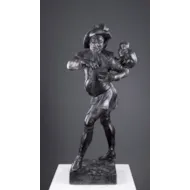
SOLD
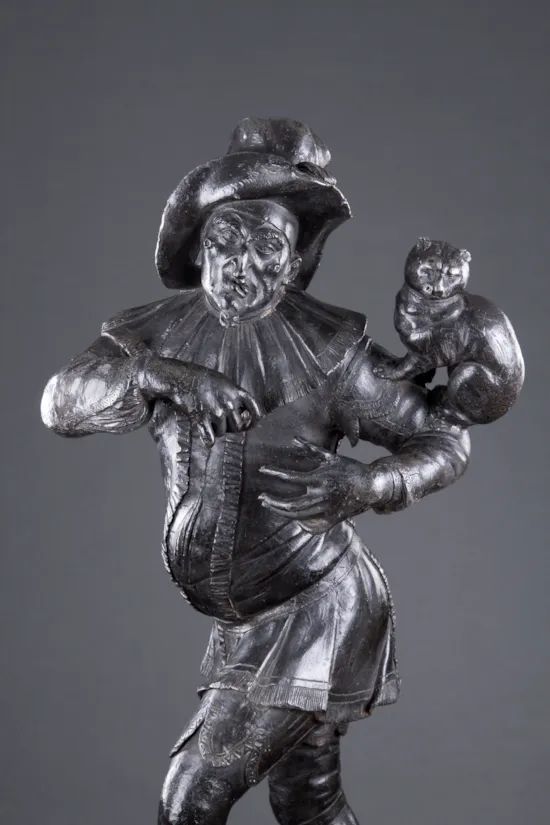
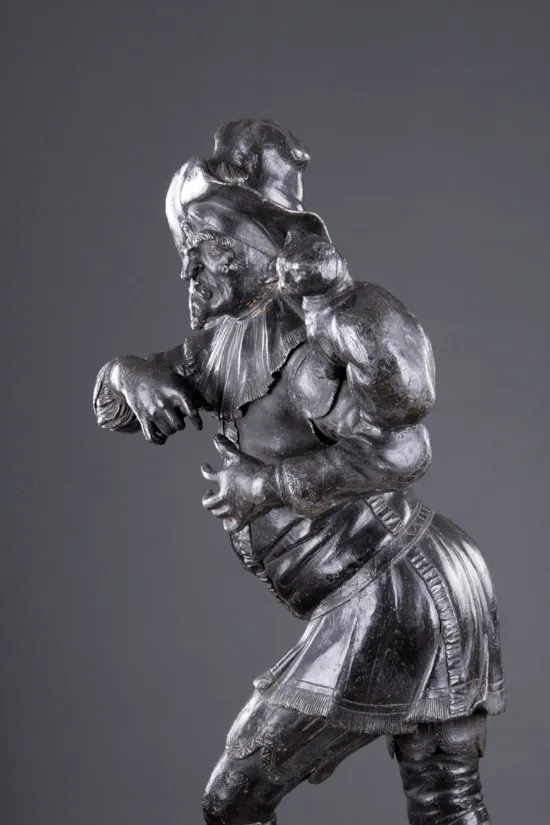
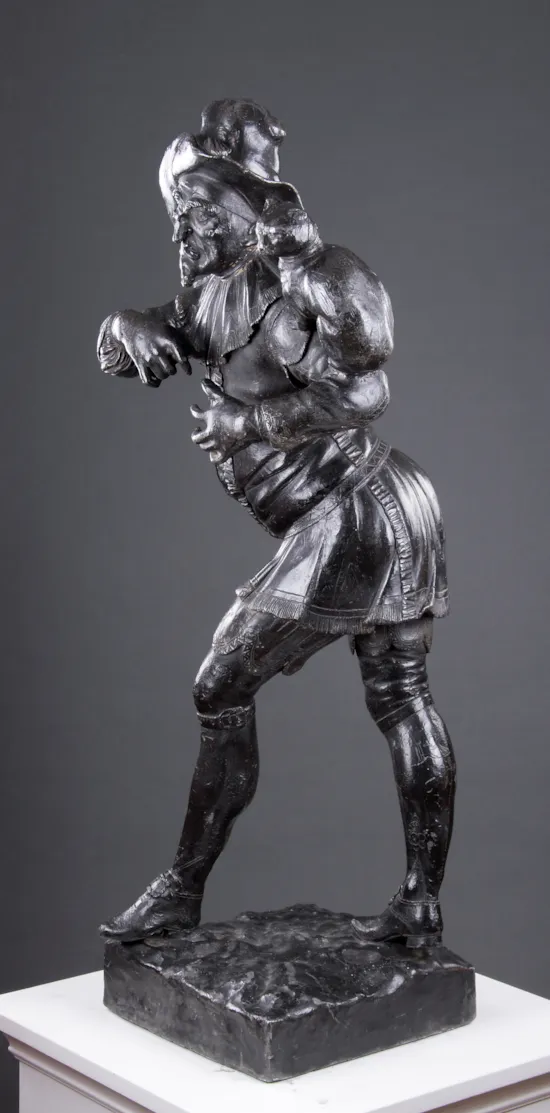
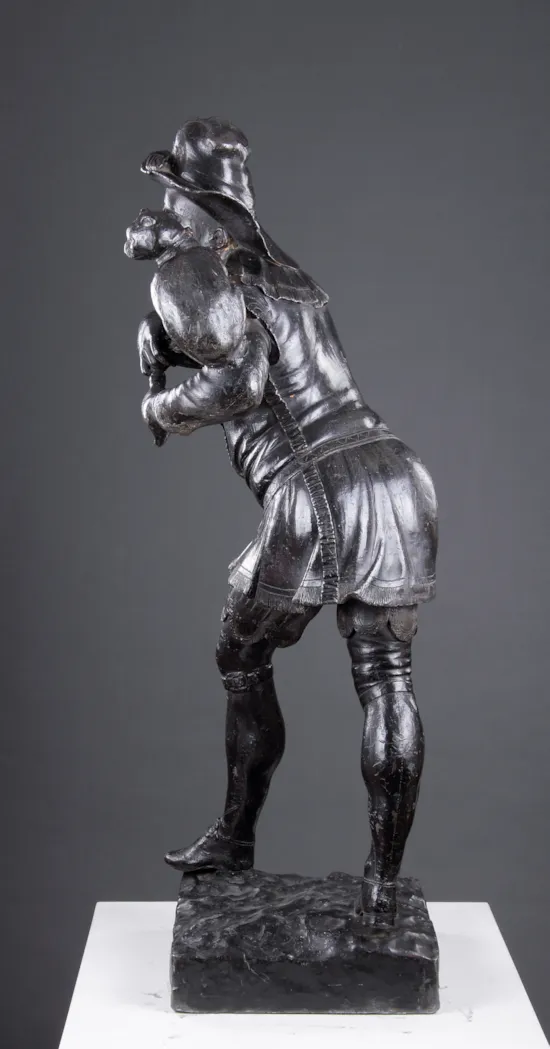
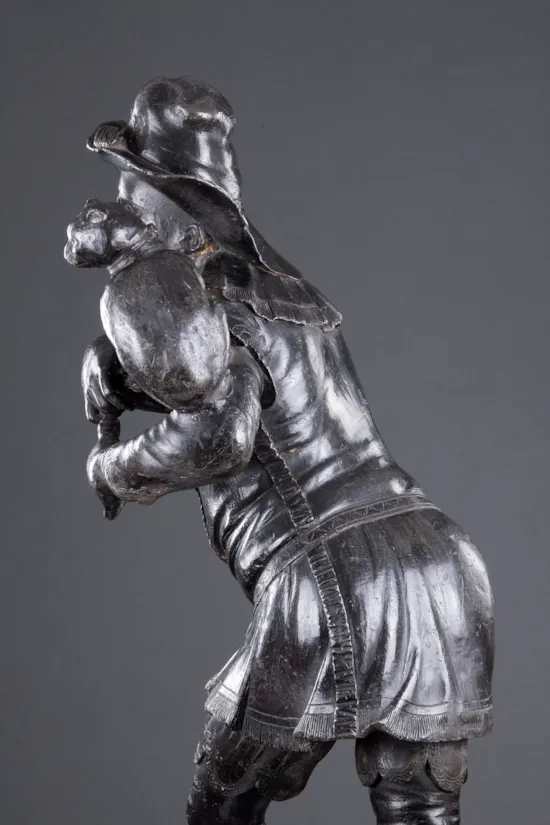
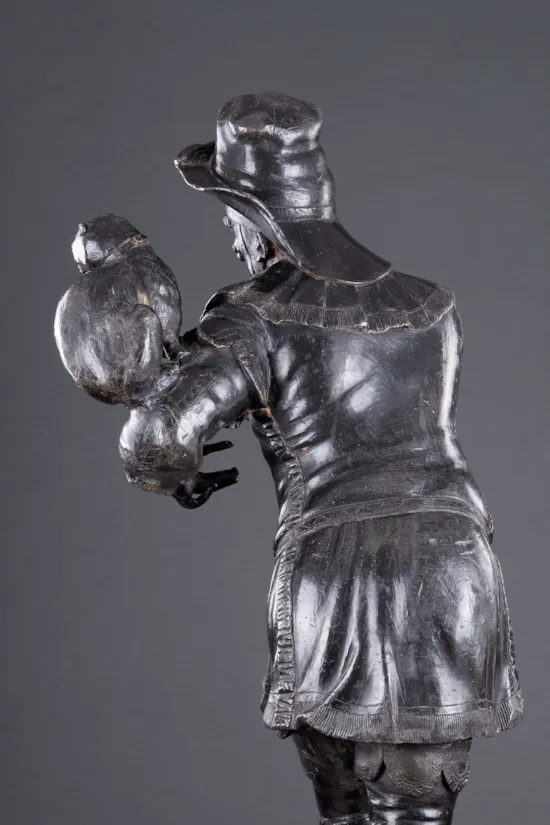
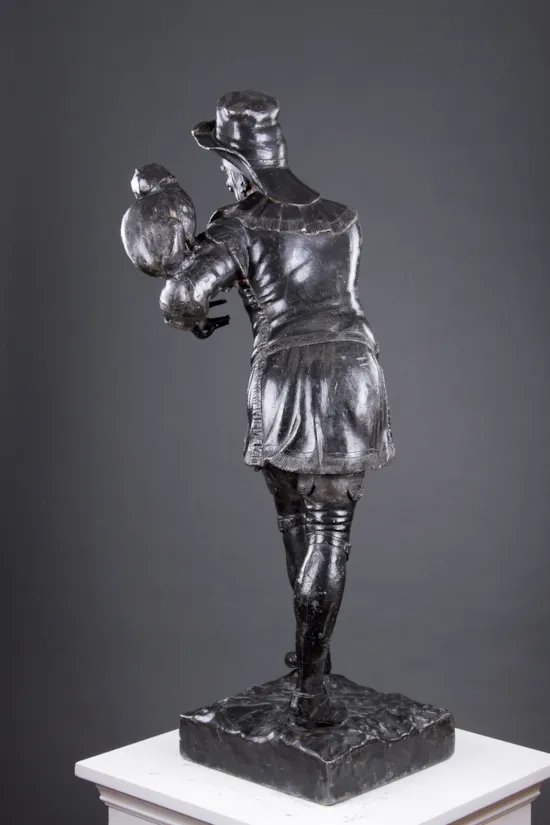
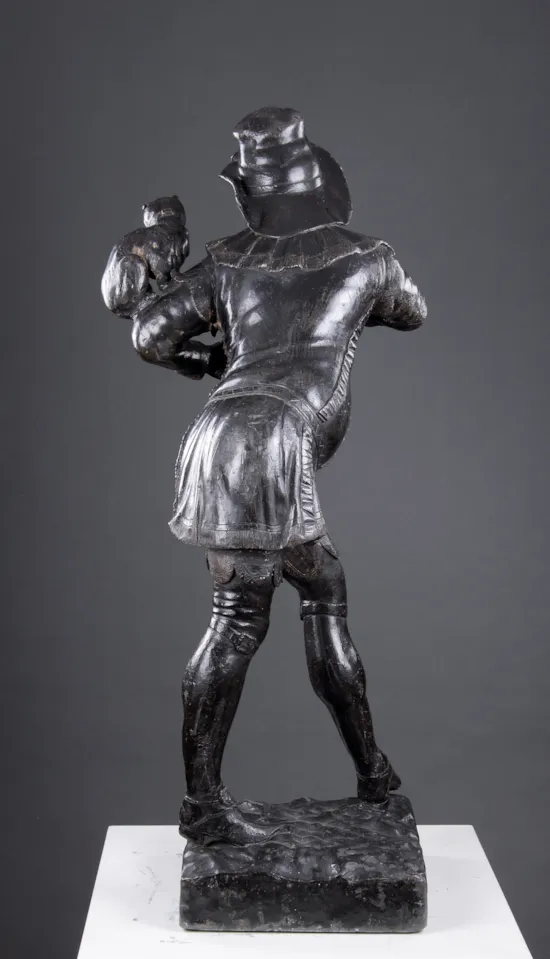
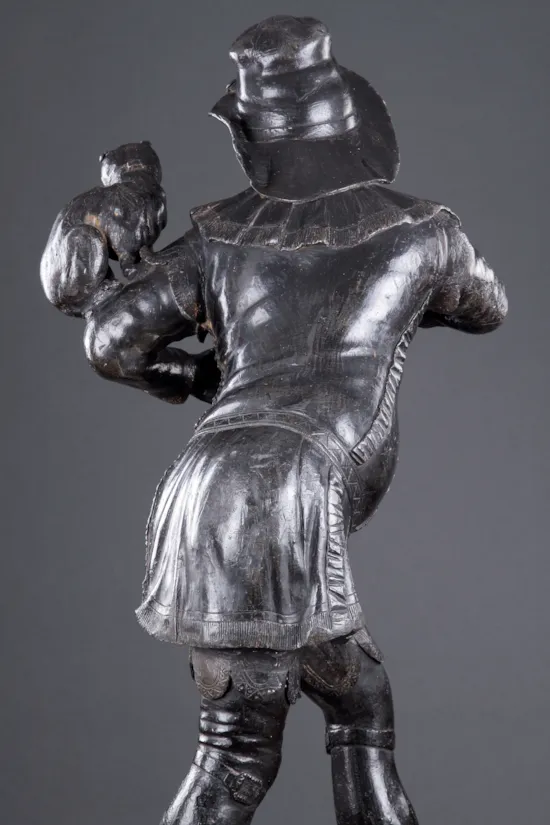
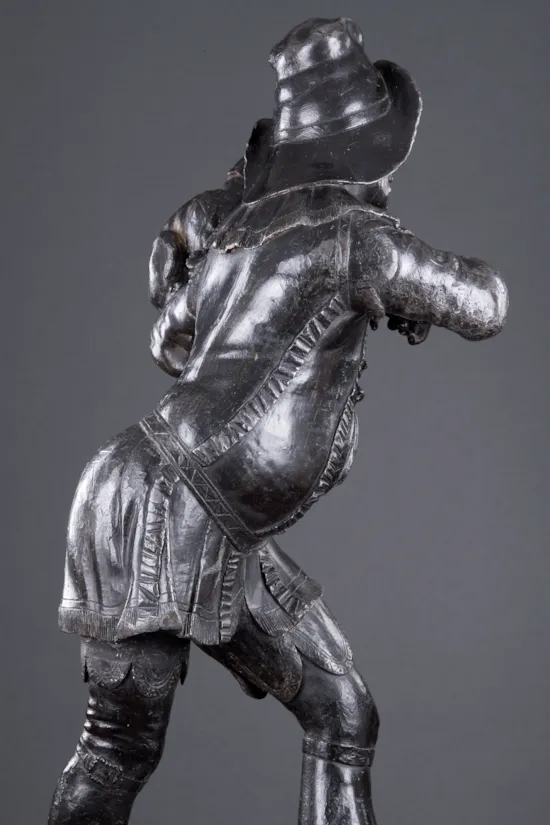
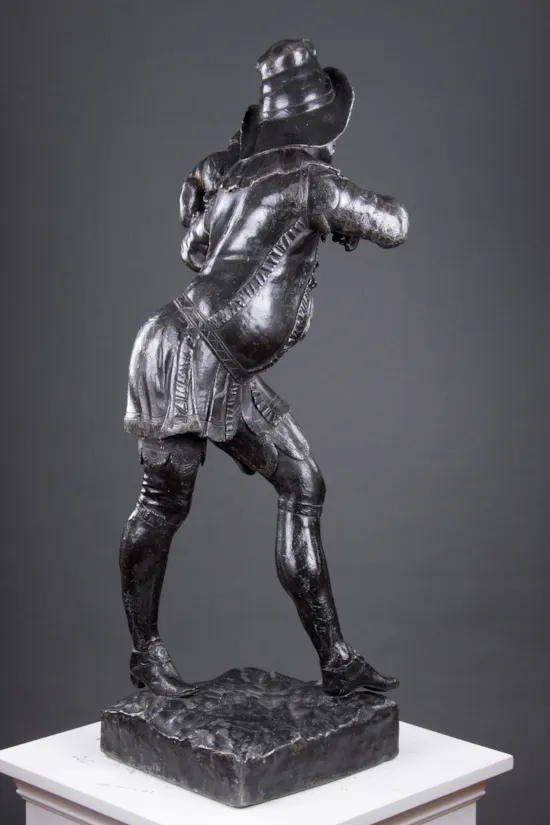
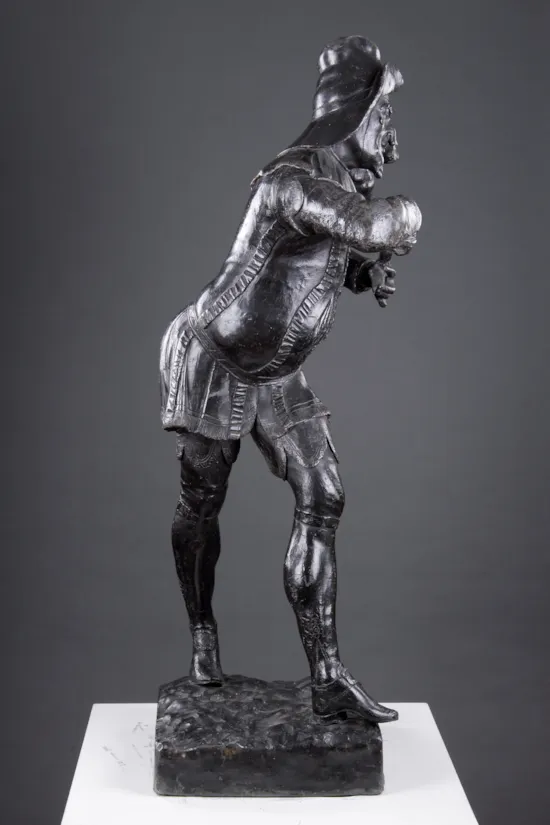

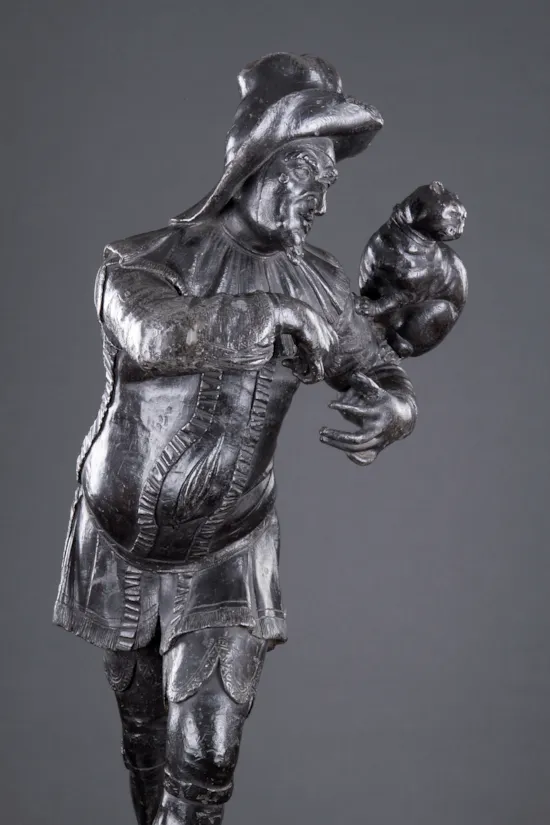
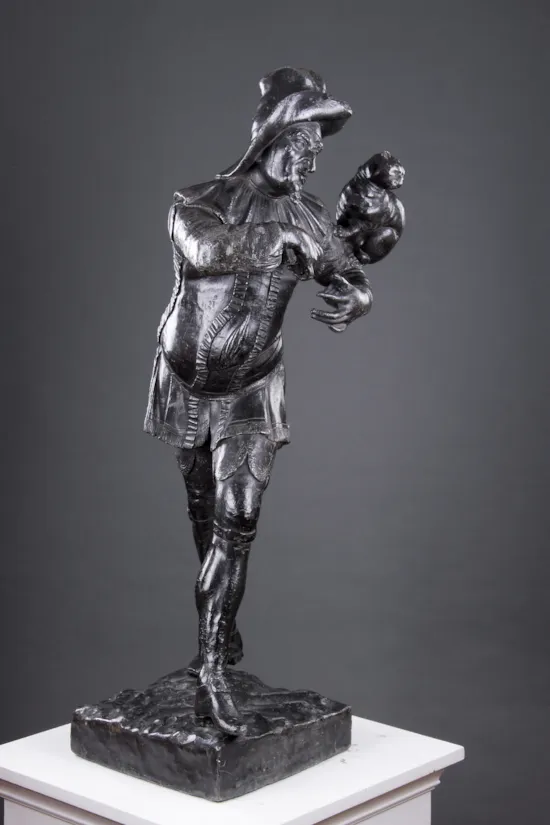
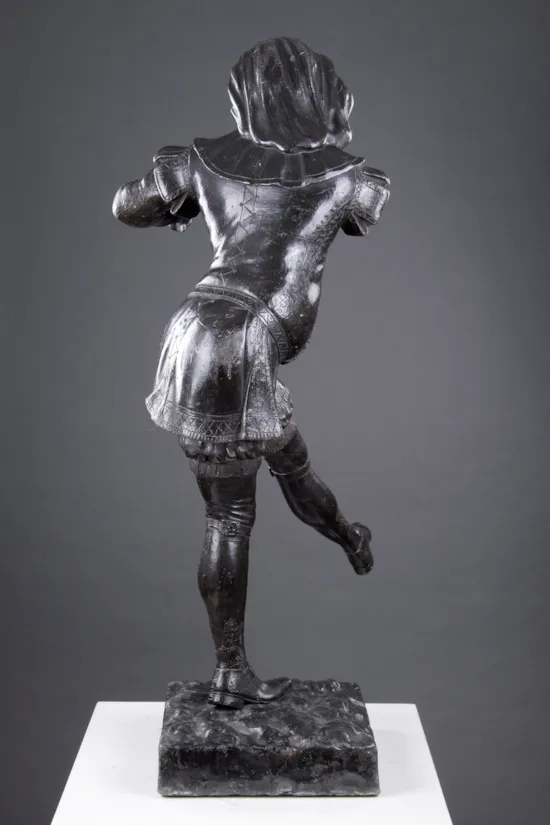
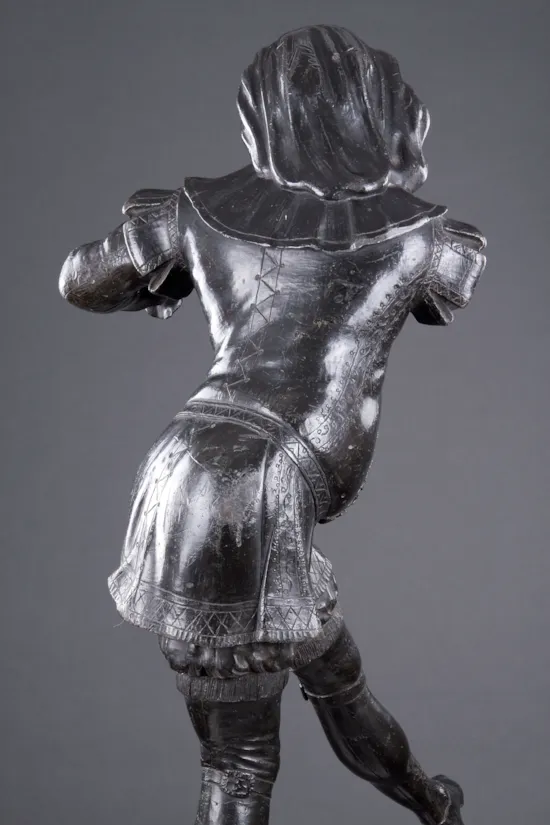
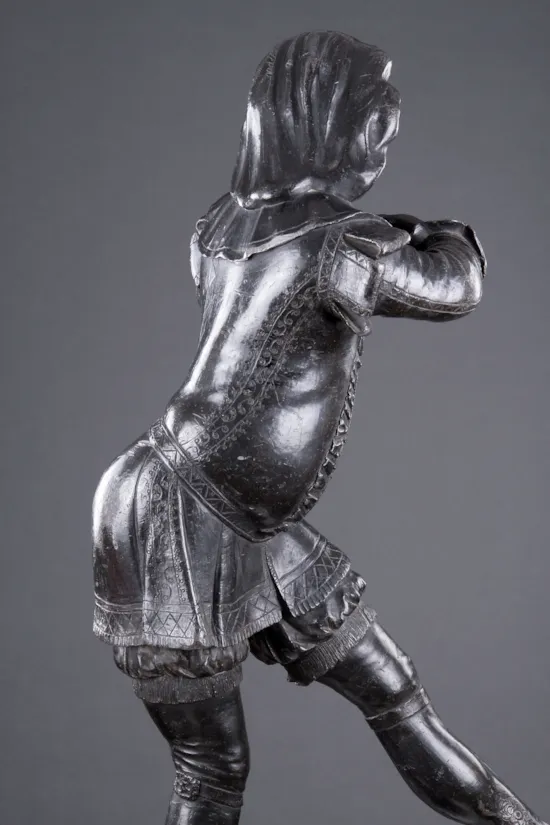
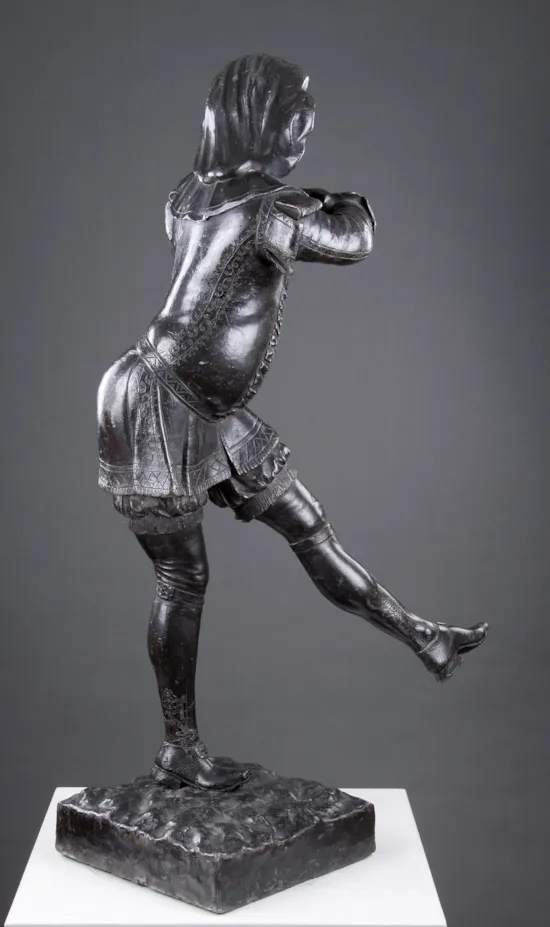
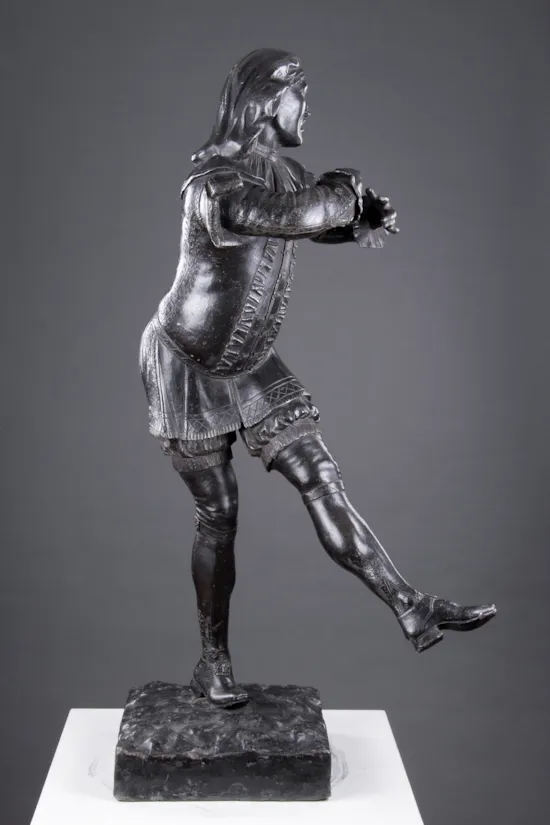
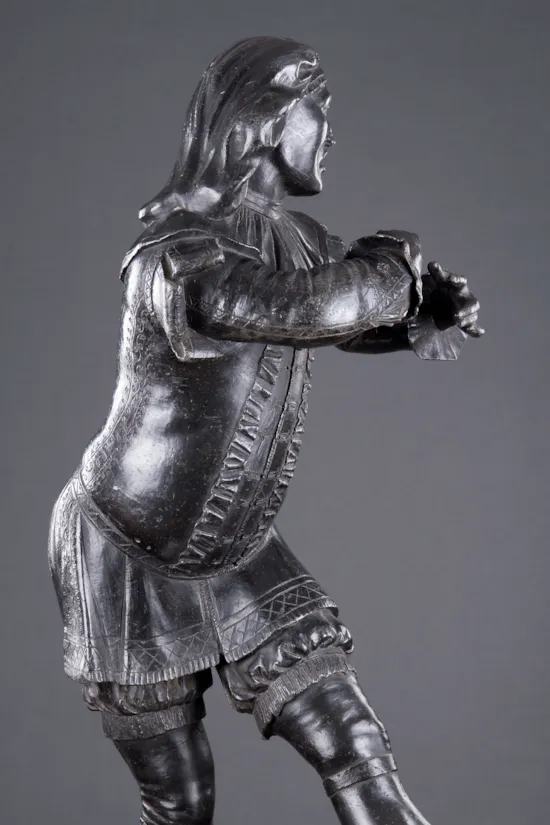
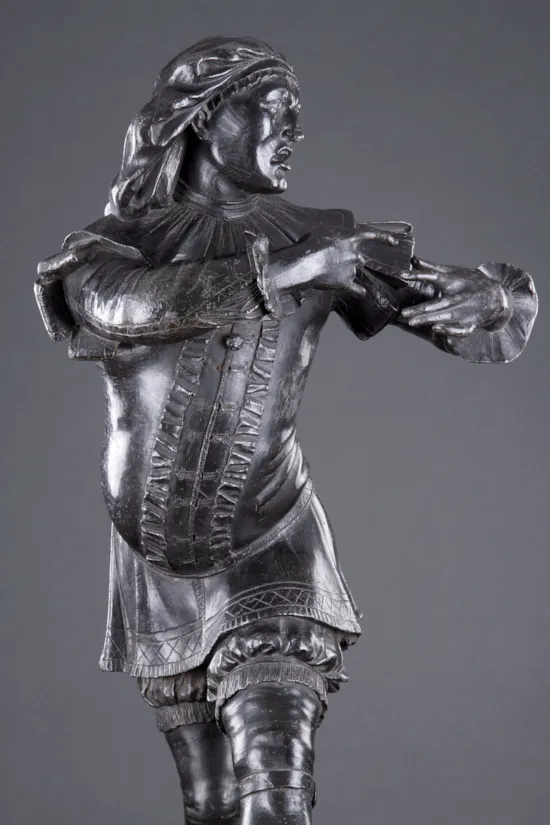
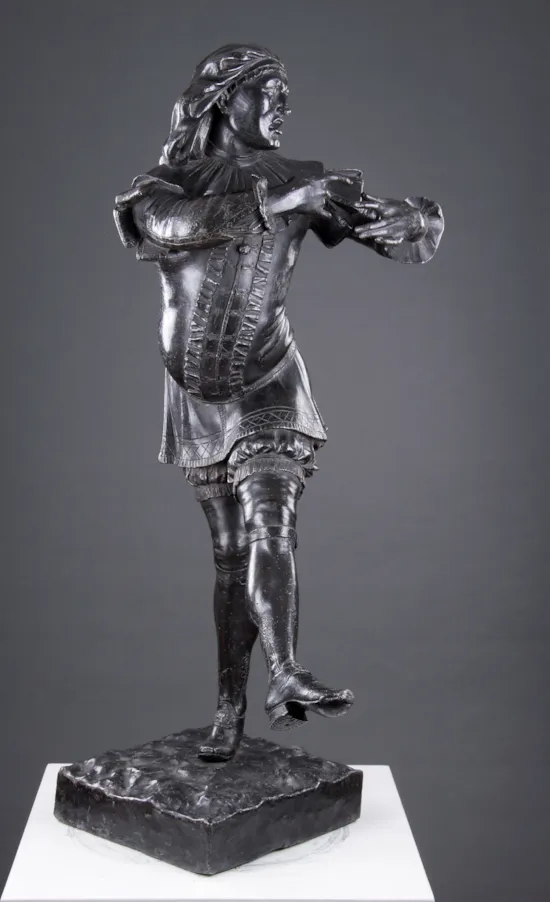

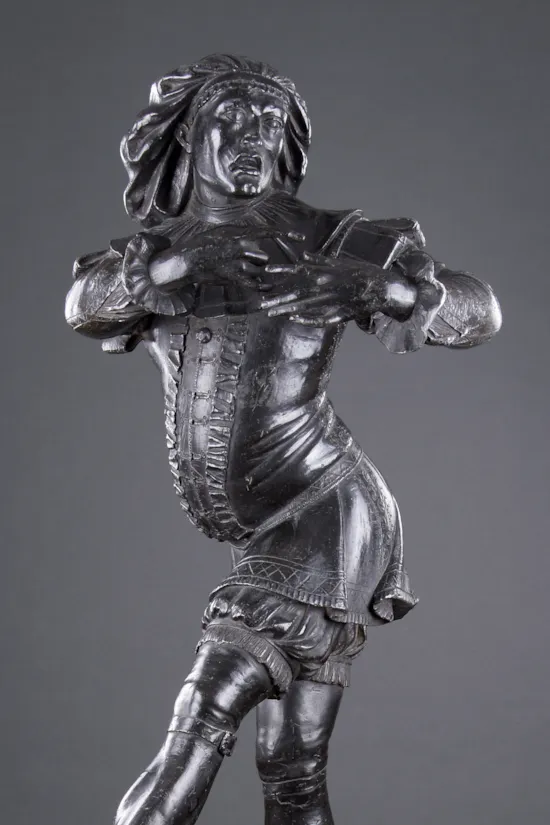
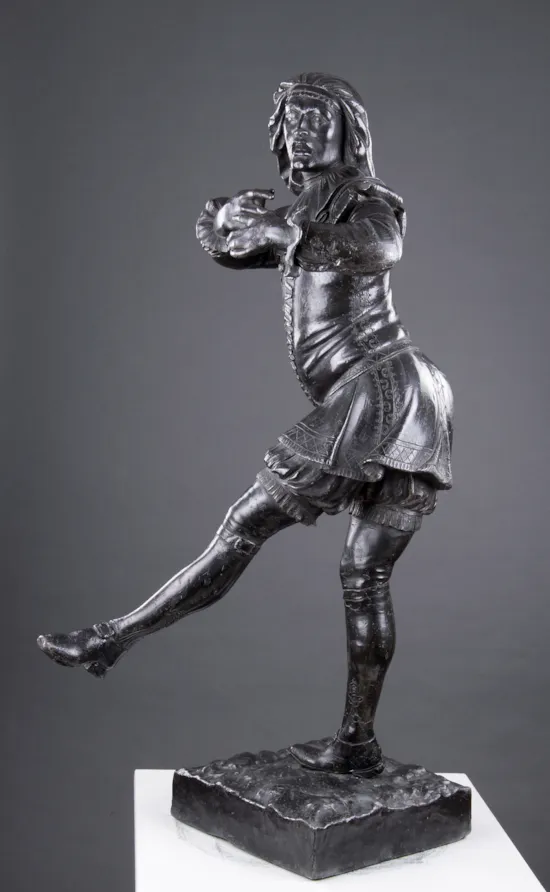
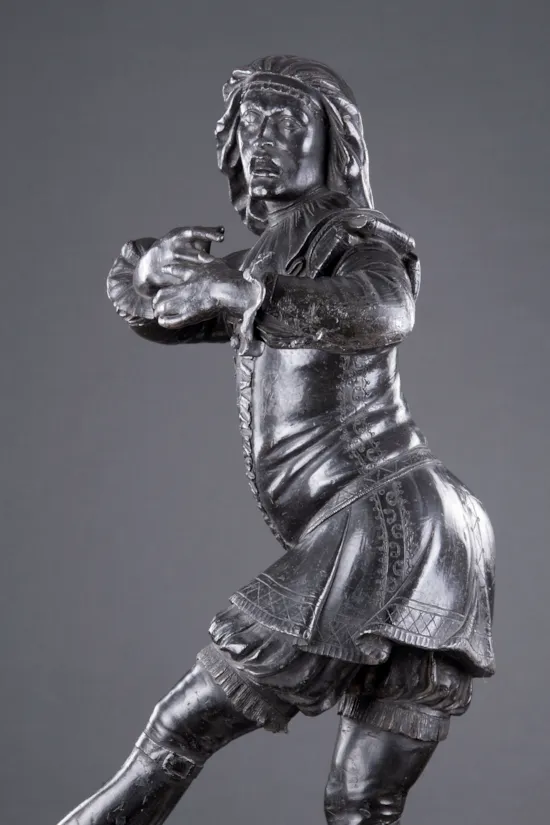

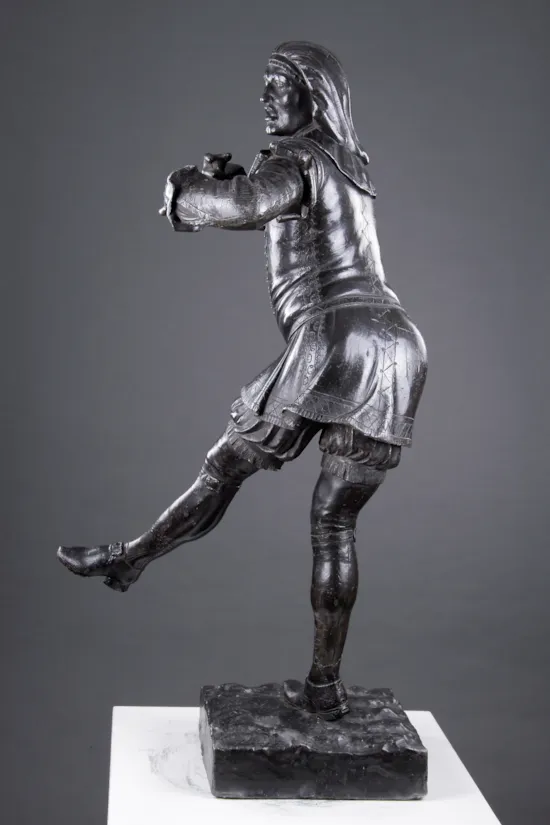
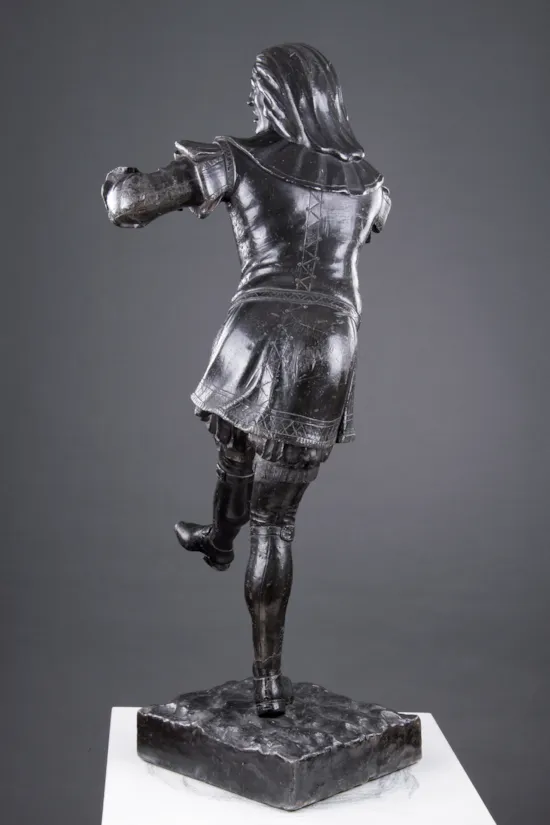
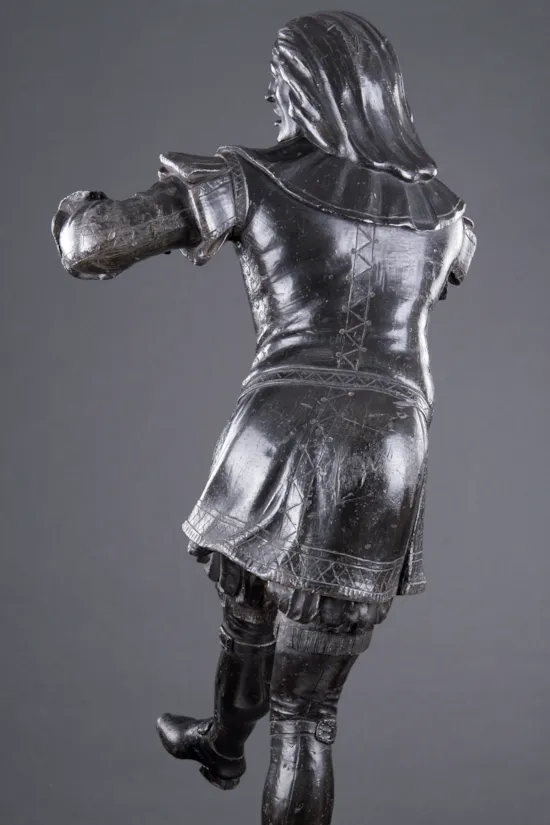































YOU MAY ALSO LIKE


